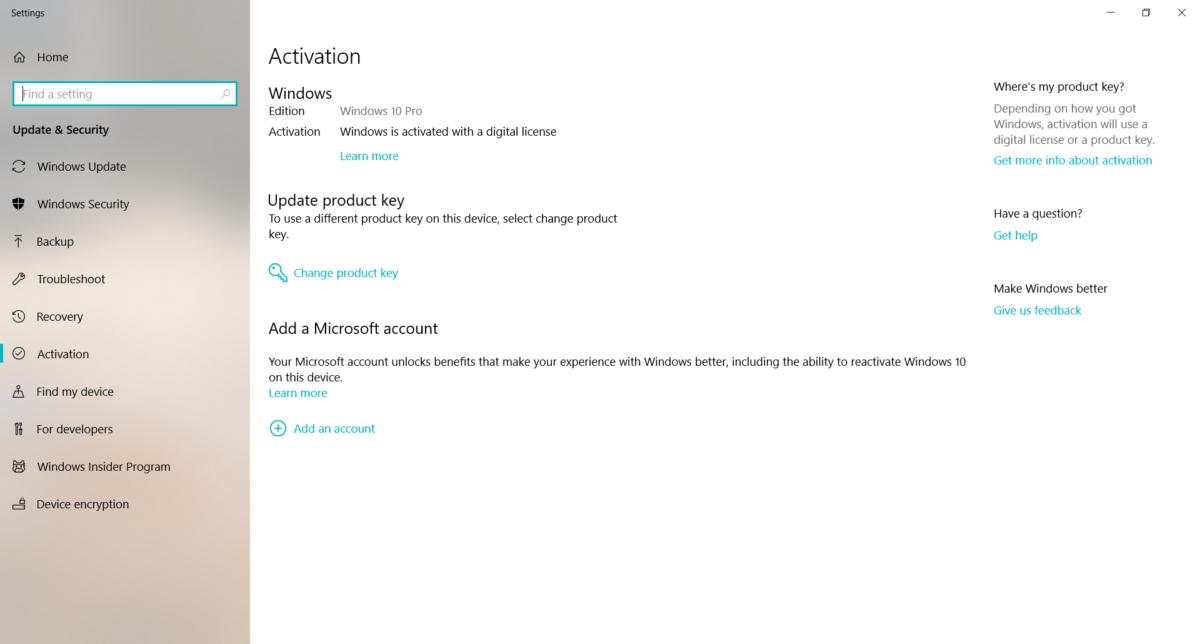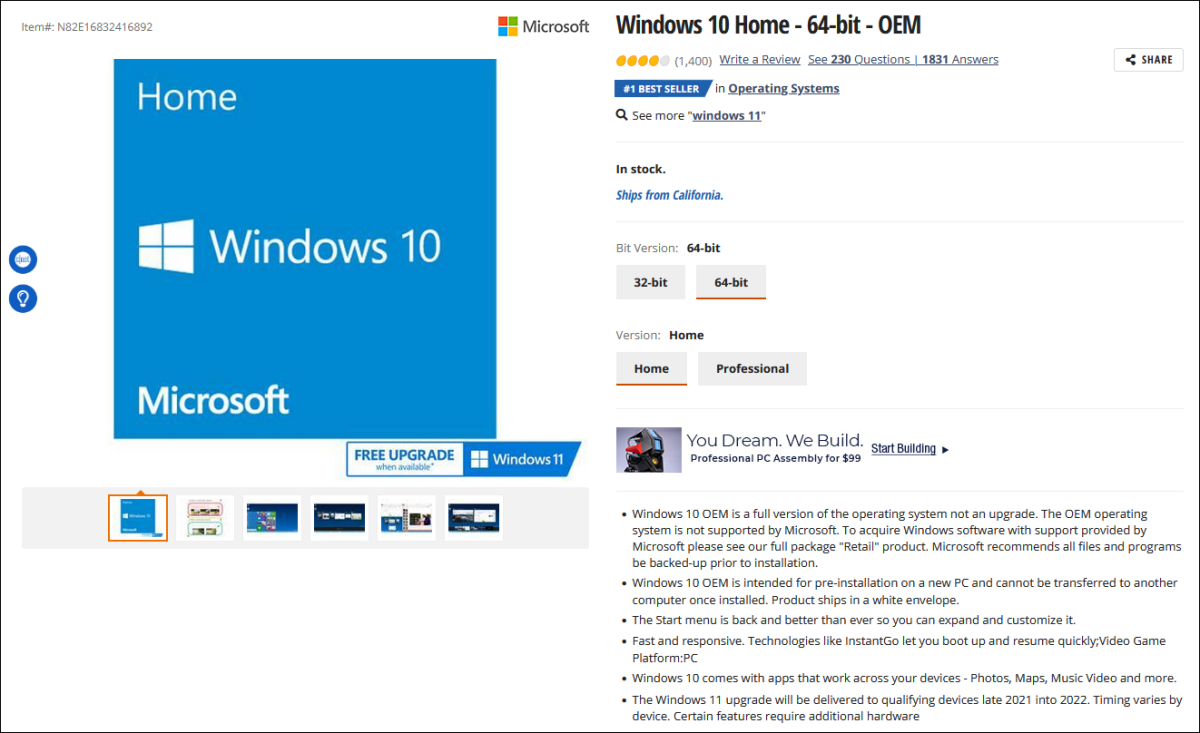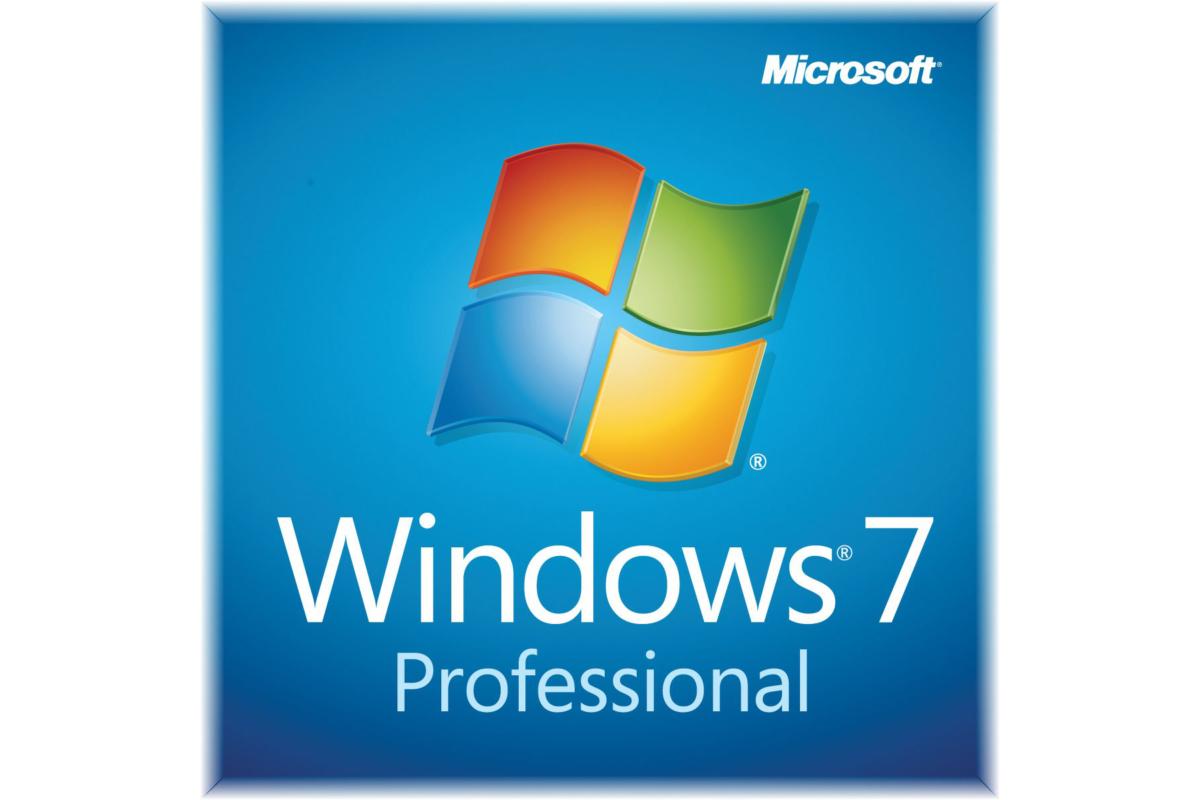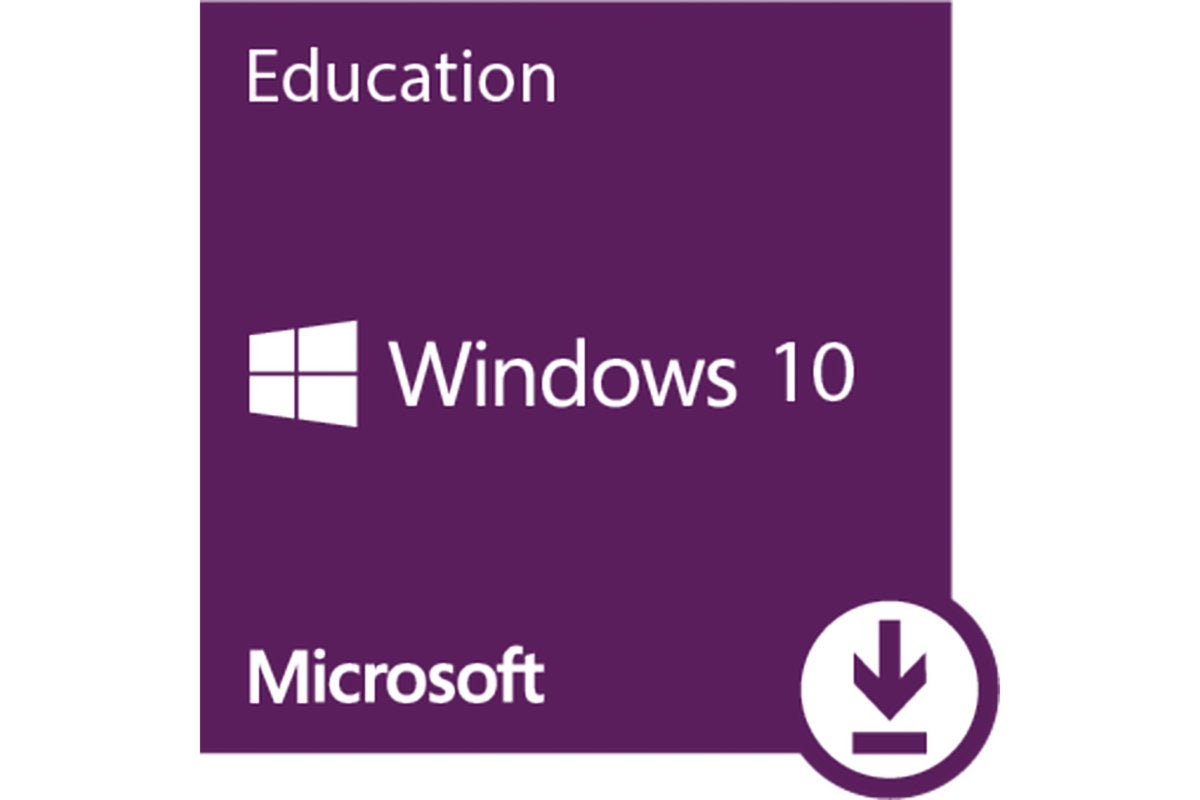
[ad_1]
Windows licenses are expensive—almost painfully so. Shelling out $139 for Windows 10 Home or $200 for Windows 10 Pro feels rough when Linux is free, since that much cash is easily a third of a budget PC build. Even if you want to run Windows 11, you’re best off getting a Windows 10 license on sale first, and then upgrading to Windows 11.
Deal alert: The PCWorld Software Store frequently sells Windows 10 editions at reduced prices. Make sure to check our Home and Pro listings before settling for full price—at the time of publication, we were selling them for $40 and $70, respectively.
But with less developer support for Linux, Windows 10 is an inescapable necessity for most of us. What’s not a given is paying full retail.
Yes, it’s possible to snag a discount on Windows 10. The amount you’ll save depends on how much hassle you can tolerate—as well as your circumstances. If you’re lucky, you could technically get Windows 10 for free. Legitimately for free, since installing Windows 10 without ever activating it doesn’t count as getting a full, sanctioned copy of Windows.
Here’s how, in several different ways.
Packrat’s loophole: Try a Windows 7 or 8 key
If you have an old Windows 7 or Windows 8 PC lying around, you may still be able to reuse its key to activate Windows 10.
When Microsoft first launched Windows 10 back in 2015, it offered Windows 7 and Windows 8 users a truly free, no-strings upgrade to the new operating system. The promotion was only available for one year—presumably to accelerate Windows 10 adoption rates—and expired in July 2016.
But even though Microsoft officially ended this program three years ago, it still has yet to completely shut everything down. The activation servers have been allowing Windows 7 and 8 keys on some Windows 10 installs.
The Windows 7 or Windows 8 product keys that commonly work for this method are the retail and OEM varieties. Only sporadic success has been reported for volume license keys (i.e., enterprise or educational licenses) working with this loophole.
While there’s no exact science for what works, the following guidelines take into account various data points floating around in articles, forums, and Reddit. First off, you’re limited to using keys for a specific version of Windows 7 or 8 with the equivalent in Windows 10. If you have a Windows 7 or 8 Home license, that will only work for Windows 10 Home. Windows 7 or 8 Pro only work for Windows 10 Pro.

If using a Windows 7 or 8 key works for activation, a digital license will be issued to you.
An additional rule of thumb is that you may need a retail product key if you’re doing a clean install of Windows 10 on a new computer. OEM product keys should work if you’re doing an upgrade or clean install of Windows 10 on the machine the Windows 7 or 8 license is tied to.
If you don’t have your license key easily accessible, you can find it by using a program like Magical Jelly Bean Product KeyFinder. (Need help getting it to work? Use our step-by-step guide.)
Once you have that on hand, you’ll enter it one of two ways: Either when prompted during the installation process if you’re doing a clean install, or through the “Change product key” option in the Activation section of Windows 10’s settings.
If the product key is recognized, you’ll be issued a digital license that associates your machine with the key, so you should be good to go for the future if this method ever expires, as Microsoft had previously said it would.
Easiest discount: An OEM license

PCWorld
- Price: $110 (Windows 10 Home), $150 (Windows 10 Pro)
Our next suggestion is a method that’s available to everyone and has the least amount of hassle: purchasing an OEM license.
License types are different than operating system versions. They dictate what you can do with the software, while OS versions are distinguished by the features available. Multiple Windows license types exist, but the two commonly available to a home user are the retail and OEM varieties.
When you walk into a store or pop over to Microsoft’s website, handing over that $139 for Windows 10 Home (or $200 for Windows 10 Pro) gets you the retail license. If you visit an online retailer like Amazon or Newegg, you can find both retail and OEM licenses for sale. You can usually spot an OEM license by its price, which tends to run about $110 for a Windows 10 Home license and $150 for a Windows 10 Pro license.
All the features of the operating system version are the same for both license types. The difference is that with a retail license, you can transfer the license key to a different PC later on.
You can’t do that with an OEM license. In exchange for a lower price, you get to use the license key on only one PC, period. If you build a system but roll a new one four years later, you can’t transfer the license to the new machine.
Also, if the hardware used to identify your system fails—namely, the motherboard—Microsoft’s registration servers won’t recognize your license as valid after you replace the dead part. Microsoft has historically been kind about such situations, however; you can usually call to reactivate the license after replacing a fried mobo. But it is an extra hassle.
For further savings, you’ll have to wait for the rare sale or Black Friday, when you can get an OEM license in the neighborhood of $85 (Windows 10 Home) to $120 (Windows 10 Pro). Otherwise, if you want to shave down costs further, it’s going to take work—or a deep locus of calm when people criticize your life choices. (Skip down to “Low prices with a caveat” for details.)
Deepest savings: The education discount
- Price: $0 to $15 (Windows 10 Education)
Not all student discounts are reserved for the under-24 set. Your local community college might be a source for a free or extremely discounted copy of Windows 10—and it’s nearly the equivalent of Windows 10 Enterprise, to boot. You’ll just have to put in some legwork (perhaps literally) to get it.
As mentioned above, license types determine what you can do with Windows—and who can use it, as well. Through the Academic Volume Licensing agreements, schools can purchase access to Windows 10 Education for their students, faculty, and staff. Some make it available only on campus machines. Others will grant a license for use on a home machine.
In that latter camp are a number of community colleges, and they often make the Windows 10 license free or supremely affordable (usually $15). The catch: You have to sign up for at least one course to qualify for campus discounts.

PCWorld
To get access to the software, you’ll typically need to register for your class first, then find and register separately at whatever online store your campus uses for software purchases. (Many community colleges use OnTheHub as their distributor, so you can use their lookup tool to begin research about your school’s options.) The storefront will require verification of your student status before you can “buy” Windows 10.
A one-unit class usually counts though, and depending on your state, it can cost as little as $76 including administrative fees. Typical options are usually of the physical education or dance variety (swim, ballet, jazz, boot camp workouts, etc.), but you can also find the occasional class on topics like Beginning Drawing, Intro to HTML & CSS, and Video for the Web.
If you were already planning on taking a class in one of these subjects, you’re getting an amazing deal. Windows 10 Education, which is similar to the enterprise version of Windows 10, includes popular Windows 10 Pro features like Bitlocker encryption and the Windows 10 May Update’s Sandbox feature. You’re essentially getting Windows 10 Pro (and then some) for as much as 60 percent off and you get to learn something new.
Even if you aren’t interested in the classes, you’re still paying considerably less than what you would for even a Windows 10 Pro OEM license. We don’t encourage truancy, but there’s nothing saying you have to show up for class, so long as you’re comfortable with a failing grade on your record.
Obviously, if your local community college doesn’t have an agreement with Microsoft in place, this strategy won’t work. Also, if the total cost of the class, administrative fees, and license fee adds up to more than the retail cost of a Windows 10 Pro license, and you wouldn’t have otherwise taken the class, that negates this deal, too. In those cases, your main options are the OEM license (outlined above) or buying through a reseller (detailed below).
Note: If you use this method, also keep an eye out for other software deals through your school. For example, your school might offer a free Microsoft 365 account, or a heavily discounted Adobe Creative Cloud account (usually $20 per month, but we’ve seen it for as little as $80 per year).
Low prices with a big caveat: Resellers

PCWorld
- Price: Under $30 (Windows 10 Home and Pro)
Scoring Windows 10 at an 85-percent discount (or more) is possible, and it’s not even difficult. But this approach comes with a salt mine of caution.
Platforms like eBay and Kinguin allow buyers to purchase product keys from third-party sellers. Some sites, like Kinguin, specialize in digital software sales—to buy Windows 10, you’ll find the Windows 10 Home OEM or Windows 10 Pro OEM listings, pick a seller, then add their product to your cart and check out.
What makes the license keys so cheap is that they’re gray market at best. In other words, the keys aren’t illegal, but they’re likely extras from a volume licensing agreement and not meant to be sold individually to home users. So they come with risk. Critics of this method rightly point out that you can buy keys that don’t work, or eventually lose their activation status because of their unknown origins. And that has happened to some people. Customer service is often poor for these kinds of sites too, leaving you high and dry.
Fans of this method say many people never run into issues, and in fact urge you to find the keys as cheap as possible (usually through eBay) to minimize problems. You can also buy with a credit card for some added protection. If you go this route, you should only get Windows 10 Pro keys. The cost difference is often negligible from Home and you get better features like Bitlocker encryption and other Pro features.
But what we actually recommend is to buy through reputable sources of cheaper keys instead. For example, some professional organizations are able to negotiate deals for their members—we suggest starting there. You can also check to see if your favorite media sites have special pricing for readers. PCWorld’s own software store is a good place to investigate—it offers retail Windows 10 Home and Pro keys at sizable discounts (sometimes as low as $30 for Home and $40 for Pro!), and those keys are guaranteed to work.
[ad_2]
Source link


